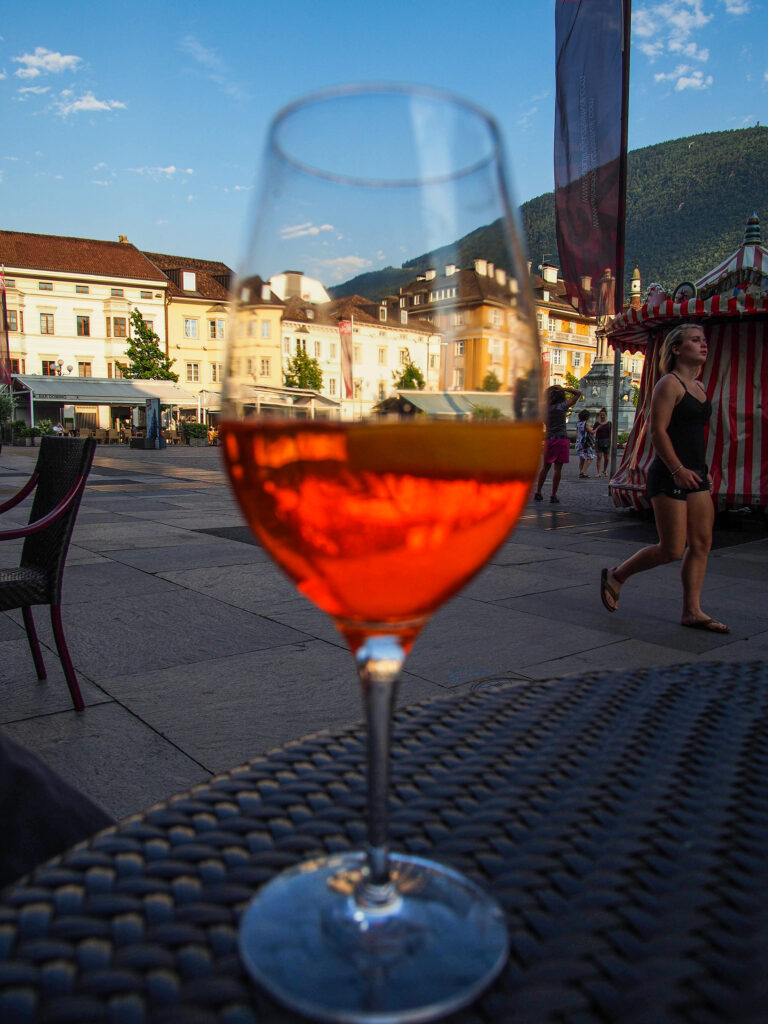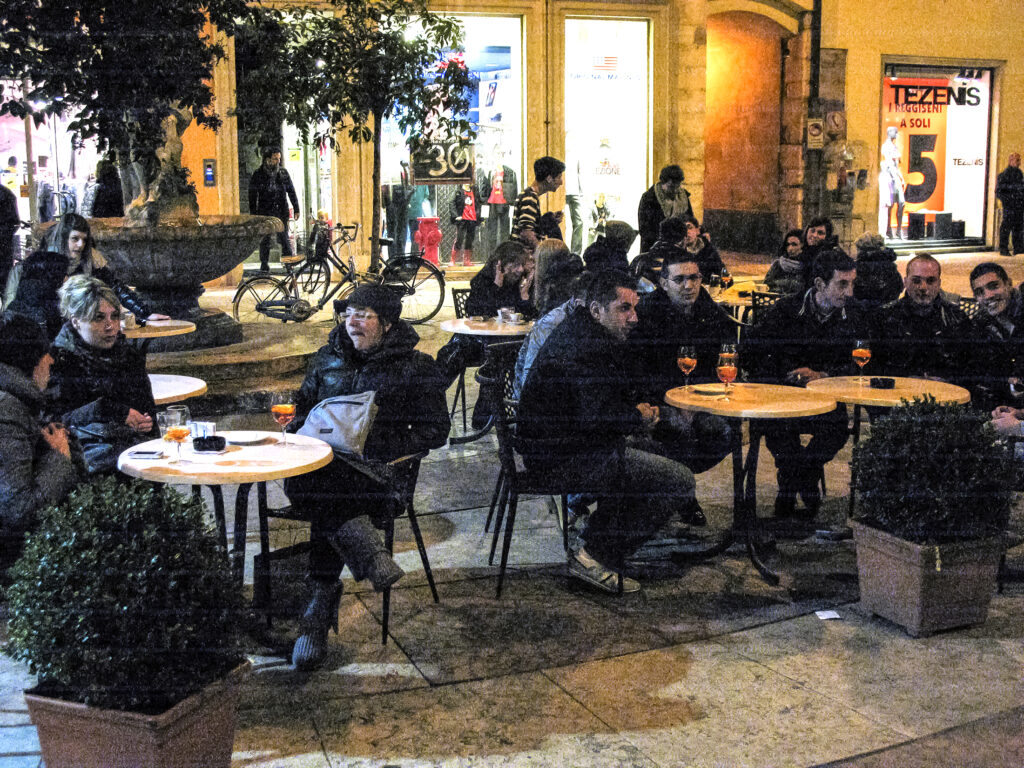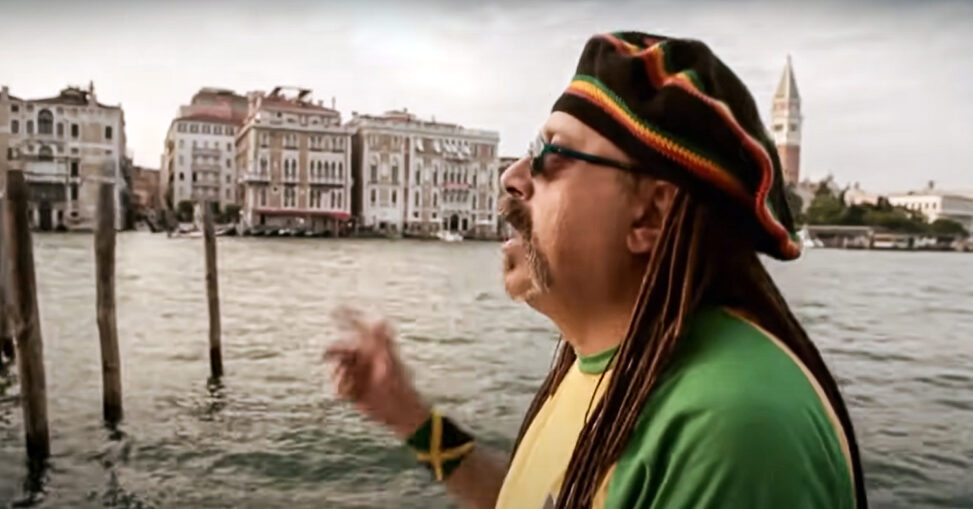I first posted about spritzes some twelve years ago. It’s time for an update.
First of all, what are these things anyway? Definitions vary, but if you order a spritz (pronounced “spriss” in Italy) in a bar or restaurant what you’re likely to get is a low-alcoholic, bubbly drink that is at least slightly bitter, and sometimes very bitter.
The word itself comes from the German spritzen, meaning “to spray.” There is a long history of proto-spritzes (or at least the dilution of wine) extending back to ancient times. Classicist James Grout tells us in his Encyclopaedia Romana that in the Roman empire “wine almost always was mixed with water for drinking; undiluted wine (merum) was considered the habit of provincials and barbarians.”
That seems to have been the reaction of the Hapsburg occupiers of northeastern Italy when they tasted the region’s wines in the nineteenth century. Italian wines were stronger, less acidic, and probably saltier than the Rieslings and Grüner veltliners of Austria, and to make these wines what they regarded as palatable the Austrians would order them diluted with soda water. At least, that is the origin legend surrounding the drink.
Spritzes are often made with prosecco, which also comes from northeastern Italy.

In their book Spritz: Italy’s Most Iconic Aperitivo Cocktail, with Recipes (Ten Speed Press, 2016) Talia Baiocchi and Leslie Pariseau distinguish three types of spritzes (or pseudo-spritzes):
- classic: “the simplest of the formulas, containing just a few ingredients: wine or prosecco, soda water, a bit of citrus, and a bitter element like Aperol, Campari, or in some cases, an amaro like Cynar”;
- modern: “draws on new garnishes, fresh juices, and alternatives to the classic Italian liqueurs”; and
- cousins: “while they maintain the same philosophical sensibilities (bitter, low-alcohol, bubbly], they do so with unorthodox ingredients (egg whites, beer, muddled fruit).”
The traditional spritz is my focus here. My history with spritzes dates back to at least 2010, when my wife, Carol, and I booked a rental in Venice’s Cannaregio sestiere. After we checked in, our host took us to a little place in the Campo Santi Giovanni e Paolo (still one of my favorite Venice locations) for spritzes. This was something like our third visit to Venice. Aperol spritzes had been around at least since the 1950s, but now, suddenly, they were everywhere.

We also spent time on that trip in places in the Veneto like Verona, Padua, and Mantua, as well as in the Alto Adige, where I was press checking a book in Trent. And in every one of them all sorts of people, from ladies in heels to laborers in boots, were gathering before dinner to share the same bitter, fizzy, rosy concoction. It’s a small world Aperol. The image above was taken in the central piazza near the Duomo in Trento (in very poor light) — you can see at least six spritzes on the tables.
The main ingredients in a Venetian spritz are white wine; Aperol, Campari, or Select (a local Venetian amaro that tastes like a blend of the first two); and bubbly water (acqua frizzante). Amari are, or course, bitters that can be drunk on their own as aperitifs, as opposed to “bitters” proper, which are used as flavorings to be added to drinks (like the angostura bitters that, along with vermouth, turn whisky into a Manhattan). The ingredients in these amari are closely guarded secrets, though my local liquor store says that Aperol, for example, employs “a subtle blend of bitter orange, gentian, rhubarb and an array of herbs and roots, using a secret recipe that has been unchanged since 1919.”
The basic recipe of a traditional spritz is simple. Following are two variations:
- 2 ounces bitter liqueur
- 3–4 ounces prosecco
- 2 ounces soda water
- 3 ounces white wine (preferably something like a soave or pinot grigio)
- 1-1/2 ounces Aperol or other bitter liqueur
- 1-1/2 ounce soda water or prosecco
The first recipe is from Baiocchi and Pariseau. The second is from the New York Times, which advises garnishing the drink with a green olive (“Gently stir all liquid ingredients over ice in a tumbler and add olive”). In my experience in Italy slices of orange were more common garnishes. But according to Baiocchi and Pariseau, the drink is “always garnished with a skewered olive and a slice of citrus.” I guess that was the style during their ten-day research trip (presumably a year or two before their book was published).
Here’s a great how-to video on making a traditional Aperol spritz:
For a less traditional variant, consider the recommendation of Liz Rubin, Category Manager for Wine, Beer, + Spirits at San Francisco’s Bi-Rite Markets:
“I love a bitter amari (Faccia Brutto Alpino or the Fred Jerbis Bitter) with a dry prosecco and a good splash of Meyer lemon, makrut lime, or even oro blanco grapefruit. I’d even go so far as to make almost a daiquiri, with equal parts liqueur and tart citrus juice, then add just a splash of prosecco to slightly cut the bitterness. If you want to make a more traditional, or mainstream spritz with Campari or another aperitivo that has a more candied bitterness, I like 1.5 ounces liqueur to 2 ounces sparkling with just a teaspoon of your fresh citrus juice of choice.”
Okay, I’m ready — make me a spritz! Or, in Venetian, fame un spritz, as Sir Oliver Skardy & Fahrenheit 451 say in their popular song of that title. In the song Skardy presents his own garnish request. The song begins Fame un spritz, fame un spritz, famelo bon co ‘na fetta de limon, which I believe in Venetian means “Make me a spritz, make me a spritz, make it good with a slice of lemon.” (The spritz in the video does include skewered olives.)
You could do worse.
